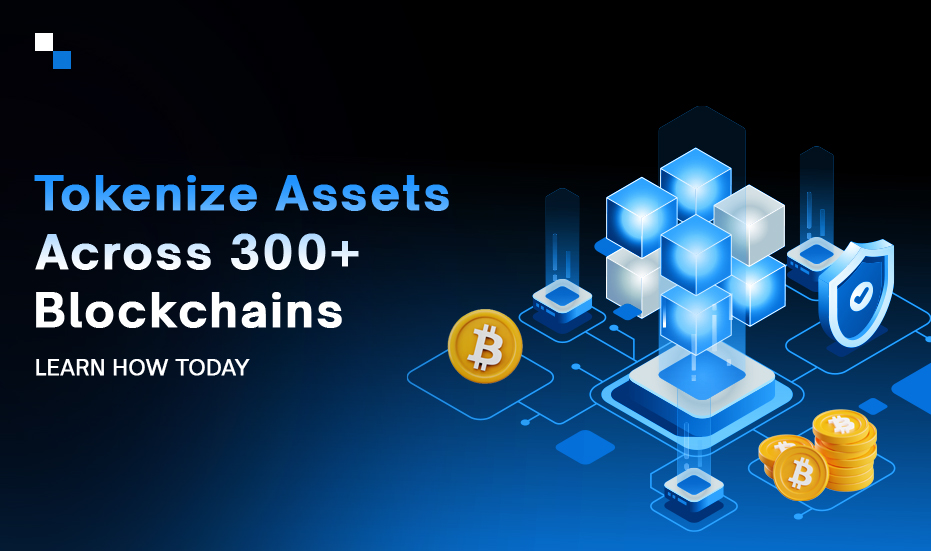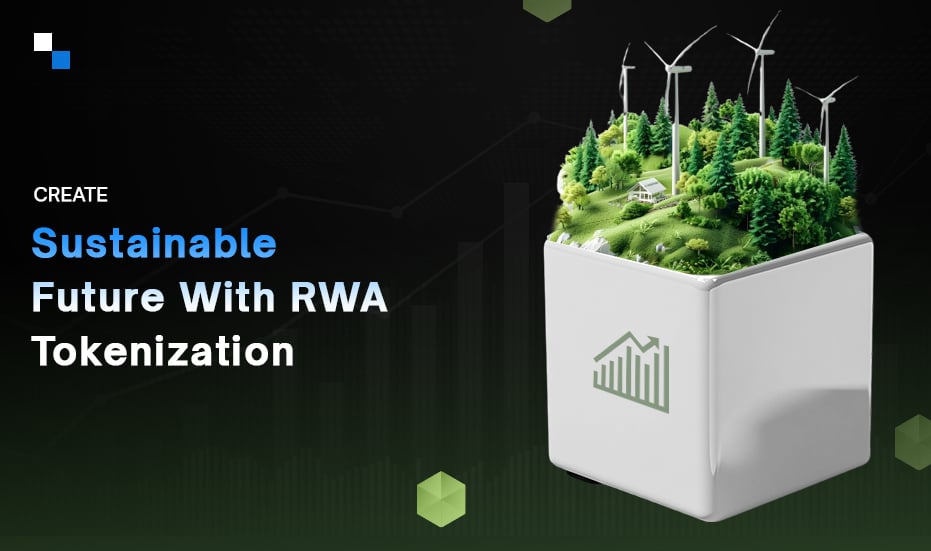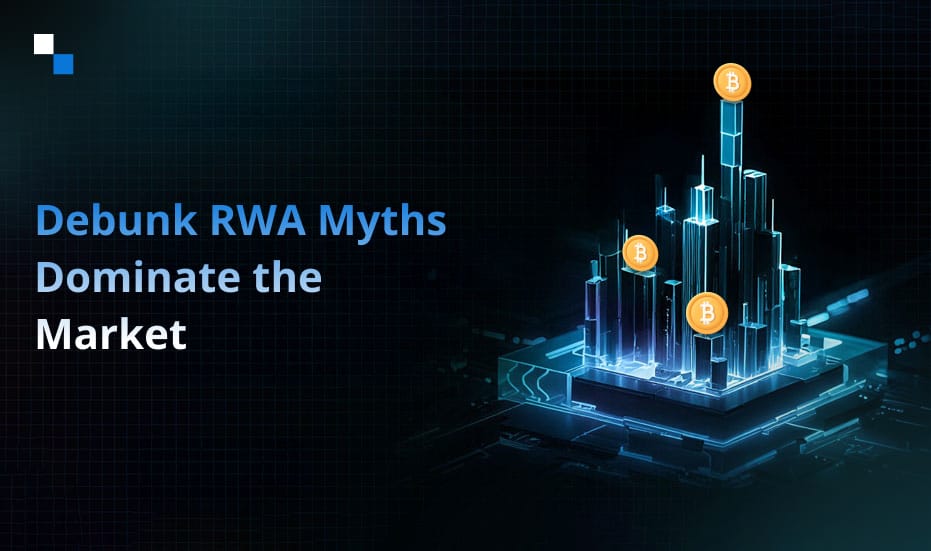
Develop a Euro-Backed Stablecoin Like EURC That Meets MiCA Standards
April 15, 2025
Missed Ethereum & Solana? Don’t Miss Cronos For Your Decentralized Exchange Development
April 15, 2025Multichain Tokenization is now becoming the new norm in the business world. The Multi-Chain Tokenization Platform breaks traditional blockchain barriers and makes the on-chain Real World Assets interoperable. This allows seamless asset transfers across blockchains, enhances liquidity, and opens new ROI generation opportunities. Businesses can leverage the multichain infrastructure to create, scale, and manage tokenized assets across blockchains. This comprehensive guide explores how enterprises can build and implement these powerful platforms to transform their operations and create new market opportunities.
Why Do Businesses Need a Multi-Chain Asset Tokenization Platform?
Purpose
The purpose of the Multi-chain Asset Tokenization Platform is simple- to provide an interface to businesses and investors for multiple blockchain asset management and trading.
How Does the Platform Work?
Unlike single-chain solutions, multi-chain platforms allow the creation of digital representations of assets—whether physical or intangible—across all blockchains. This offers greater flexibility, enhanced security, and broader market reach.
Who Can Use the Multichain Tokenization Platform?
Financial institutions, real estate companies, and technology enterprises increasingly use these platforms and unlock significant competitive advantages. By developing the Multi-Chain Tokenization infrastructure, these organizations can gain control over the entire tokenization process, from asset selection to market distribution.

Benefits Of Using the Multichain Tokenization Platform
Cross-Chain Compatibility
Businesses with multi-chain real-world asset tokenization platforms can enjoy unparalleled versatility in their operations. These platforms support asset transfer and management across numerous blockchains, including Ethereum, Binance Smart Chain, Solana, and more. This cross-compatibility allows enterprises to:
- Reach different investor segments across various blockchain ecosystems.
- Hedge against blockchain-specific risks through diversification.
- Leverage the unique strengths of different blockchain networks.
Enhanced Liquidity Options
Multi-chain platforms dramatically improve asset liquidity. By enabling token listing and trading across multiple networks, businesses can:
- Access deeper liquidity pools from diverse markets.
- Create more efficient pricing mechanisms.
- Reduce slippage and transaction costs for end-users.
Operational Efficiency
Building a proprietary tokenization platform allows organizations to streamline their operations through:
- Automated compliance procedures.
- Simplified token management processes.
- Reduced reliance on third-party service providers.
Future-Proofing the Business
The blockchain landscape evolves rapidly. By building multi-chain platforms, businesses remain adaptive to emerging technologies and changing market preferences. This approach protects investments and maintains competitive positioning regardless of which blockchain networks ultimately achieve dominance.
Essential Components for Building Effective Tokenization Platforms
Robust Smart Contract Infrastructure
Smart contracts form the backbone of any tokenization platform. Businesses must develop secure, audited contracts that handle:
- Token creation and issuance
- Ownership transfers
- Compliance enforcement
- Lifecycle management
Financial institutions typically require smart contracts with regulatory features like transfer restrictions and investor accreditation verification.
Cross-Chain Bridge Technology
Efficient asset transfer between blockchains requires sophisticated bridge protocols. Platform builders must implement secure bridges that:
- Verify transactions across different consensus mechanisms
- Lock and unlock tokens during cross-chain transfers
- Maintain accurate accounting of assets across all supported networks
Compliance Management Systems
Successful multi-chain platforms incorporate comprehensive compliance tools that:
- Verify user identities across different jurisdictions
- Track regulatory requirements for various asset classes
- Document transaction histories for audit purposes
- Implement necessary restrictions based on regional regulations
User-Friendly Management Interfaces
Even sophisticated blockchain infrastructure requires intuitive interfaces. Enterprises building tokenization platforms should develop:
- Administrative dashboards for asset management
- Streamlined token creation wizards
- Reporting and analytics tools
- White-label options for client implementations
Multichain Asset Tokenization Platform: Industry Applications
Banking and Financial Services
Banks and financial institutions increasingly build tokenization platforms to modernize their service offerings. These platforms enable:
- Tokenized securities issuance.
- Programmable financial products.
- Automated dividend and interest distributions.
- Fractional ownership of high-value assets.
Real Estate
Property developers and management companies build tokenization platforms to:
- Create liquid markets for traditionally illiquid assets.
- Enable fractional property ownership.
- Streamline rental income distribution.
- Automate property transfer processes.
Supply Chain Management
Manufacturing and logistics companies develop multi-chain platforms to:
- Track products across complex supply networks.
- Verify authenticity and provenance.
- Automate payments based on delivery confirmations.
- Create transparent audit trails.
Implementation Strategies
Build vs. Partner Approach
Businesses have several options when creating tokenization platforms:
- In-house development: Complete control but requires substantial blockchain expertise
- White-label solutions: These have faster implementation but less customization
- Hybrid approach: Core development in-house with specialized components from partners
Most successful implementations utilize the hybrid approach, combining proprietary business logic with established infrastructure components.
Technical Considerations to Build Platform
Blockchain Selection
While multi-chain platforms support numerous networks, businesses should prioritize blockchains based on:
- Transaction throughput and cost
- Developer ecosystem strength
- Regulatory compliance features
- Market adoption rates
Security Architecture
Tokenization platforms require comprehensive security measures:
- Multi-signature authentication.
- Tiered access controls.
- Automated threat detection.
- Regular security audits and penetration testing.
Scalability Planning
As tokenized assets grow in volume and complexity, platforms must scale accordingly. Builders should implement:
- Modular architecture
- Load-balanced infrastructure
- Database optimization
- Efficient cross-chain communication protocols
Regulatory Considerations
Platforms that tokenize investment products must incorporate:
- Investor accreditation verification
- Securities registration capabilities
- Reporting mechanisms for regulatory filings
- Trading restrictions where applicable
Data Protection
With user information stored across blockchain networks, platforms need:
- Privacy-preserving technologies
- GDPR and other regional compliance features
- Data minimization protocols
- Secure storage of personally identifiable information
Anti-Money Laundering (AML)
Effective AML controls include:
- Transaction monitoring systems
- Suspicious activity reporting
- Risk scoring algorithms
- Customer due diligence procedures
Future Trends in Multi-Chain Tokenization
Interoperability Protocols
The next generation of tokenization platforms will incorporate universal interoperability standards that allow seamless asset movement between any blockchain network without custom bridge implementations.
Regulatory Automation
Advanced regulatory technology will enable platforms to automatically adapt to changing compliance requirements across different jurisdictions, reducing legal risk and operational overhead.
Integration with Traditional Finance
Tokenization platforms will increasingly connect with conventional financial infrastructure, creating hybrid systems that combine the benefits of blockchain technology with established banking networks.
AI-Enhanced Management
Artificial intelligence will play a growing role in optimizing tokenization platforms, from predictive compliance to market-making and liquidity provision.
Getting Started: Key Steps for Platform Development
- Define business requirements and identify target asset classes
- Select primary and secondary blockchain networks based on specific needs
- Develop core smart contract infrastructure with appropriate security audits
- Implement cross-chain bridges for supported networks
- Create administrative interfaces and management tools
- Test thoroughly across all supported chains
- Obtain necessary regulatory approvals for operation
- Launch with limited assets before scaling to full production

Take Away
Multi-chain tokenization platforms represent a significant opportunity for forward-thinking enterprises across industries. By building these platforms, businesses position themselves at the forefront of asset digitization while gaining unprecedented control over their digital asset strategies. Businesses that build these platforms today will establish themselves as leaders in the digital asset ecosystem of tomorrow.
Ready to build your multi-chain tokenization platform? Our team of blockchain specialists can help you navigate the technical and regulatory landscape. Speak with our tokenization experts to discover how your business can benefit from building a multi-chain platform.



